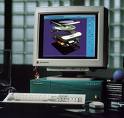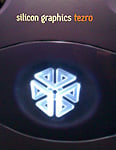jan-jaap wrote:
SAQ wrote:
Express graphics (XS/XZ/Elan/Extreme) are OpenGL native - everything from RealityEngine on had a native OpenGL implementation.
Nope, the first OpenGL implementations were Indigo2 IMPACT, and Onyx InfiniteReality respectively.
The best reference I could find right now:
SGI graphics FAQ wrote:
Subject: -75- Why does my GL application run slower on newer SGI hardware than it did on older SGI hardware?
Date: 8 Mar 1997 00:00:01 CST
One probable explanation is that your program is using IrisGL (sometimes referred to as just "GL") rather than OpenGL. Starting with Impact graphics, SGI graphics hardware is optimized for native OpenGL. IrisGL calls are executed through an emulation layer known as IGLOO, or "IrisGL On OpenGL." This layer of emulation reduces performance.
The best solution is to port your program to OpenGL
A 1999 program would not be using IRIS GL, so it shouldn't have the IGLOO performance hit.
I think we're talking at cross purposes - another SGI piece has the following:
Quote:
Starting with IRIX 5.2, OpenGL is supported for the following graphics
workstations:
Indy - Indy XL 8 or 24 bits, XZ (XZ, as of IRIX 5.3)
Indigo - Entry Level, XS, XS24, XZ, Elan
Indigo2 - XL, XZ, Extreme
Crimson - Entry Level, XS, XS24, Elan, Extreme, RealityEngine
Onyx - VTX, RealityEngine, RealityEngine2
4D30/35 - Elan
With IRIX 5.3, OpenGL is supported for these workstations:
Personal IRIS Graphics: 8-bit, G, TG (except GR1.1)
VGX, VGXT, Skywriter
This leaves the following graphics families with no OpenGL implementation:
IRIS 1000, 2000, and 3000 series
IRIS 4D/G, GT, GTX
Personal IRIS GR1.1 (suggest purchasing graphics board upgrade to GR1.2)
Read more:
http://www.faqs.org/faqs/graphics/openg ... z0jwzJ9CMb
The implementations listed as supported starting in IRIX 5.3 don't have an OpenGL implementation that makes full use of the hardware, so some routines that you'd expect the graphcis to do are instead bustled off to the software renderer with the attendant decrease in performance (most notably texturing in VGX, and the OGL implementation doesn't make good use of the Turbo option on GR1).
The middle graphics had full hardware implementations for both OpenGL and IRIS GL, doing what the graphics could do in hardware and using software for unsupported functions (e.g. texturing on Express).
IMPACT/InfiniteReality and later are "OpenGL only", optimized for OpenGL and using the emulation layer (IGLOO, which uses DGL calls) to support the older IRIS GL library rather than having a "native" implementation.










 SGI Indigo 2 R10K 195 Solid Impact 256MB, MAX Impact Pending
SGI Indigo 2 R10K 195 Solid Impact 256MB, MAX Impact Pending











